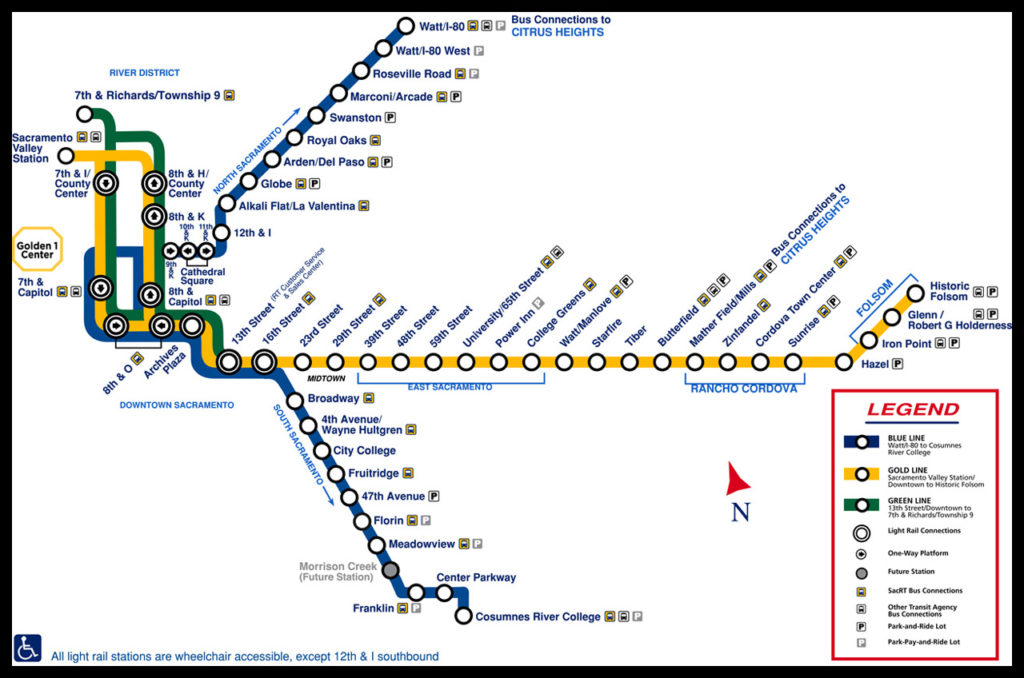
Transit Briefs: NYMTA, SacRT
Written by Marybeth Luczak, Executive Editor
New York MTA has received a strengthened credit rating outlook from Moody’s Investors’ Service, which amended the outlook of its A3 rating for MTA’s Transportation Revenue Bonds rating to “positive” from “stable.”
Moody’s Investors’ Service ups the credit rating outlook for New York Metropolitan Transportation Authority (MTA). Also, the state of California has awarded Sacramento Regional Transit (SacRT) $4.4 million for three transportation infrastructure projects.
NYMTA
MTA has received a strengthened credit rating outlook from Moody’s Investors’ Service, the transit authority reported Sept. 19. Moody’s amended the outlook of its A3 rating for MTA’s Transportation Revenue Bonds rating to “positive” from “stable.”
“Moody’s commented that it is making the update based on the significant increase in state tax support secured by [New York] Governor [Kathy] Hochul in the latest State Budget, which led the MTA to forecast five years of balanced budgets for the first time in its history,” according to MTA.
The improved credit rating outlook is expected to boost investor confidence, MTA said, and could lead to reduced interest rates paid by the transit authority on future capital program bonds issued using the Transportation Revenue Credit.
In July, MTA released its five-year financial plan that projects a balanced budget through 2027. According to MTA, a one-time state subsidy of $300 million, new dedicated revenue funding sources, including an increase to the Payroll Mobility Tax, increase of city funding for paratransit, and other dedicated taxes in the FY 2024 New York State Budget have “strengthened” its financial profile, along with a “modest” fare and toll increase.
At the same time, MTA said, its post-COVID ridership recovery “continues to track along the mid-point of a range predicted by McKinsey in July 2022, with daily ridership now regularly surpassing two-thirds of pre-COVID levels or 6.5 million trips on a daily basis.”
The credit rating outlook of MTA’s Transportation Revenue Bonds, backed by a diverse basket of revenues including fares and tolls paid by MTA customers and state revenue streams, “reflects the performance of the operating budget and is a barometer of the MTA’s overall financial health,” MTA noted.
Prior to the COVID-19 pandemic, the credit was rated A1 with a negative outlook, the transit authority reported, “due to concerns about flattening ridership trends, escalating leverage that included growing market access risk, and large debt and capital needs.” The credit rating was downgraded in April 2020 to an A2 and again in September 2020 to A3, with a negative outlook, it said. Following federal funding that provided “short-term relief,” MTA said Moody’s revised the outlook to stable, at the same rating A3, in April 2021.
“An improving outlook assumes that if we execute on our five-year financial plan announced in July … the MTA could be on the path to a full credit upgrade,” MTA Chief Financial Officer Kevin Willens said. “With our financial standing now solid, we can be flexible in the ways we progress on capital projects to complete necessary state-of-good-repair work and deliver better service so we can continue to bring riders back.”
“As I said back in July, Governor Hochul and the State Legislature delivered for riders with this year’s budget, securing the MTA’s current and future financial stability,” MTA Chair and CEO Janno Lieber said. “Moody’s action improving their credit outlook for the MTA reflects that significant financial progress, as well as the steady return of ridership and our success beating back subway crime.”
SacRT

SacRT on Sept. 19 reported receiving $4.4 million in state grants for three projects aimed at improving transportation infrastructure and addressing climate change.
SacRt, in partnership with Bridge Housing, received a $3.2 million California Strategic Growth Council Affordable Housing Sustainable Communities grant to improve eight bus stops and make platform modifications at the Arden/Del Paso Station on the Blue Line, ensuring that it meets the height requirements for the deployment of new low-floor light rail vehicles (S700) from Siemens Mobility. As part of the award, Bridge Housing will transform a vacant land and unoccupied buildings at 440 Arden Way into a mixed-use development including 124 affordable homes. According to SacRT, the ground floor will offer a commercial childcare center available to residents of the broader neighborhood, a resident services suite, community room, and a multipurpose room, surrounding a courtyard with playgrounds and community gardens.
Additionally, the California Department of Transportation (Caltrans) awarded a $730,209 Climate Adaptation Planning Grant to SacRT and the city of Sacramento to perform a comprehensive multi-hazard risk assessment of transportation systems, develop adaptation solutions, and create a prioritized list of transit projects using a multi-criteria analysis. According to SacRT, this initiative will ultimately “lead to the integration of climate change adaptation strategies into the capital improvement process, providing both the city and SacRT with actionable efforts to reduce climate change impacts on our transportation infrastructure.”
Caltrans also awarded a $470,000 Climate Adaptation Grant to SacRT and the city of Elk Grove to further plan the extension of Blue Line light rail and/or bus rapid transit from the city of Sacramento to the city of Elk Grove. This project encompasses an existing conditions report, alignment and station location recommendations, ridership projections, technical analysis, traffic modeling, and station area plans, according to SacRT, which noted that the collaboration, supported by the Sacramento Area Council of Governments, will engage various stakeholders and involve community participation to ensure that the project aligns with community “needs and aspirations.”
“These grants mark a significant milestone in our efforts to enhance transit accessibility, increase housing and reduce our region’s carbon footprint,” SacRT General Manager/CEO Henry Li said. “We are committed to delivering sustainable and innovative solutions that will not only improve transit services but also contribute to a greener and more resilient future for the Sacramento region.”
In a related development, SacRT on June 30 announced that it has been awarded two grants totaling $35 million from the California Transportation Commission to improve the light rail system.



